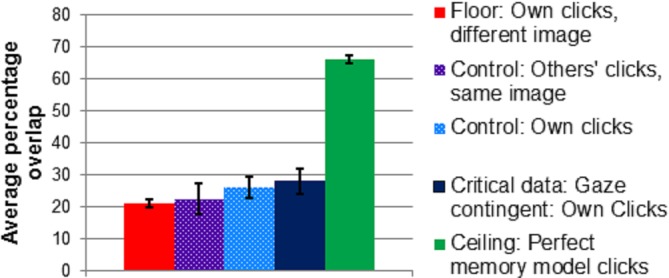Figure 3.

Average percentage overlap between “windows” of different size radius (average overlap 2.6° of visual angle) around each fixation and clicks on where observers thought they looked in the image for the spotlight (gaze-contingent) condition (black and yellow) and the control condition (dark blue). An observer's fixations overlapped with where a different observer thought someone else might look at in the same image is shown in purple. The perfect memory model represents ceiling performance (green), while the overlap with another image represents chance performance (red). Error bars represent standard deviations.
